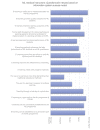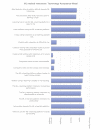How Self-Directed e-Learning Contributes to Training for Medical Licentiate Practitioners in Zambia: Evaluation of the Pilot Phase of a Mixed-Methods Study
- PMID: 30482744
- PMCID: PMC6290268
- DOI: 10.2196/10222
How Self-Directed e-Learning Contributes to Training for Medical Licentiate Practitioners in Zambia: Evaluation of the Pilot Phase of a Mixed-Methods Study
Abstract
Background: Zambia faces a severe shortage of health workers, particularly in rural areas. To tackle this shortage, the Medical Licentiate program was initiated at Chainama College of Health Sciences in the capital, Lusaka, in 2002. The objective of the program was to alleviate the shortage of human resources in curative care. On-the-job training is conducted in decentralized teaching hospitals throughout Zambia. However, the program faces significant challenges such as shortages of senior medical instructors and learning materials.
Objective: Our aim was to address these challenges by introducing a self-directed, e-learning platform with an offline tablet as part of a collaborative blended-learning intervention to supplement local teaching and training.
Methods: The pilot phase of the e-learning platform was evaluated using a mixed-methods approach with a convergent parallel design. Various methods were employed to test the data's adequacy and potential for generating valid results. Methods included questionnaires according to the technology acceptance model and information system success model by DeLone and McLean, semistructured interviews, learner diaries, pretesting, the collection of usage data, exam results, demographics, and informal feedback. Outcome measures included usage, adoption, efficiency, acceptance, user-friendliness, and gained knowledge and skills.
Results: In total, 52 students and 17 medical instructors participated in the pilot evaluation. The questionnaire results showed a high acceptance of the technology (>80%) and high agreement (>75%) with the e-learning platform. Semistructured interview results showed an overall appreciation of the e-learning intervention, but the need for more e-learning materials. Respondents identified a need for multimedia materials that transfer skills such as medical procedure visualization and interactive exercises to practice procedural knowledge. The learning diaries identified the lack of specific learning materials and potential shortcomings of existing learning materials. However, students were satisfied with the current e-learning content. The majority of students used the e-learning platform offline on their tablets; online e-learning was underutilized.
Conclusions: The pilot phase of the tablet-based e-learning platform to support the self-directed learning intervention was well received and appreciated by students and medical instructors of Chainama College of Health Sciences. E-learning for knowledge acquisition appears to be adequate and feasible for this low-resource educational environment. Our evaluation results guide the further development of the full implementation of the e-learning platform in this educational setting. E-learning materials should reflect curriculum requirements, and additional multimedia and interactive content is needed, as well as improved integration and active participation from medical instructors in the e-learning processes.
Keywords: adoption; effectiveness; evaluation; health care workers; intervention; medical e-learning; rural health; sub-Saharan Africa; sustainability.
©Sandra Barteit, Albrecht Jahn, Annel Bowa, Sigrid Lüders, Gregory Malunga, Clemence Marimo, Sigrid Wolter, Florian Neuhann. Originally published in JMIR Medical Education (http://mededu.jmir.org), 27.11.2018.
Conflict of interest statement
Conflicts of Interest: None declared.
Figures







Similar articles
-
Electronic logbooks (e-logbooks) for the continuous assessment of medical licentiates and their medical skill development in the low-resource context of Zambia: A mixed-methods study.Front Med (Lausanne). 2022 Nov 23;9:943971. doi: 10.3389/fmed.2022.943971. eCollection 2022. Front Med (Lausanne). 2022. PMID: 36507498 Free PMC article.
-
Perspectives of Nonphysician Clinical Students and Medical Lecturers on Tablet-Based Health Care Practice Support for Medical Education in Zambia, Africa: Qualitative Study.JMIR Mhealth Uhealth. 2019 Jan 15;7(1):e12637. doi: 10.2196/12637. JMIR Mhealth Uhealth. 2019. PMID: 30664475 Free PMC article.
-
Technology Acceptance and Information System Success of a Mobile Electronic Platform for Nonphysician Clinical Students in Zambia: Prospective, Nonrandomized Intervention Study.J Med Internet Res. 2019 Oct 9;21(10):e14748. doi: 10.2196/14748. J Med Internet Res. 2019. PMID: 31599731 Free PMC article.
-
Impact of summer programmes on the outcomes of disadvantaged or 'at risk' young people: A systematic review.Campbell Syst Rev. 2024 Jun 13;20(2):e1406. doi: 10.1002/cl2.1406. eCollection 2024 Jun. Campbell Syst Rev. 2024. PMID: 38873396 Free PMC article. Review.
-
MEDICOL: online learning in medicine and dentistry.Acad Med. 2002 Sep;77(9):926-7. doi: 10.1097/00001888-200209000-00028. Acad Med. 2002. PMID: 12228095 Review.
Cited by
-
Significant differences in written assessments as a result of a blended learning approach used in a clinical examination course in internal medicine: a randomized controlled pilot study.GMS J Med Educ. 2021 Feb 15;38(2):Doc42. doi: 10.3205/zma001438. eCollection 2021. GMS J Med Educ. 2021. PMID: 33763527 Free PMC article. Clinical Trial.
-
Online learning for continuous professional development of healthcare workers: an exploratory study on perceptions of healthcare managers in Rwanda.BMC Med Educ. 2022 Dec 8;22(1):851. doi: 10.1186/s12909-022-03938-y. BMC Med Educ. 2022. PMID: 36482342 Free PMC article.
-
Real-life Evaluation of an Interactive Versus Noninteractive e-Learning Module on Chronic Obstructive Pulmonary Disease for Medical Licentiate Students in Zambia: Web-Based, Mixed Methods Randomized Controlled Trial.JMIR Med Educ. 2022 Feb 24;8(1):e34751. doi: 10.2196/34751. JMIR Med Educ. 2022. PMID: 35200149 Free PMC article.
-
Electronic logbooks (e-logbooks) for the continuous assessment of medical licentiates and their medical skill development in the low-resource context of Zambia: A mixed-methods study.Front Med (Lausanne). 2022 Nov 23;9:943971. doi: 10.3389/fmed.2022.943971. eCollection 2022. Front Med (Lausanne). 2022. PMID: 36507498 Free PMC article.
-
Medical students' acceptance and perceptions of e-learning during the Covid-19 closure time in King Abdulaziz University, Jeddah.J Infect Public Health. 2021 Jan;14(1):17-23. doi: 10.1016/j.jiph.2020.11.007. Epub 2020 Dec 5. J Infect Public Health. 2021. PMID: 33341480 Free PMC article.
References
-
- Tjoa A, Kapihya M, Libetwa M, Lee J, Pattinson C, McCarthy E, Schroder K. Doubling the number of health graduates in Zambia: estimating feasibility and costs. Hum Resour Health. 2010 Sep 22;8:22. doi: 10.1186/1478-4491-8-22. https://human-resources-health.biomedcentral.com/articles/10.1186/1478-4... - DOI - DOI - PMC - PubMed
-
- Ministry of Health Zambia . Zambia National Health Strategic Plan 2017 – 2021. Zambia: Ministry of Health, Republic of Zambia; 2017.
-
- Stekelenburg J, Kyanamina S, Mukelabai M, Wolffers I, van Roosmalen J. Waiting too long: low use of maternal health services in Kalabo, Zambia. Trop Med Int Health. 2004 Mar;9(3):390–398. - PubMed
-
- Ferrinho P, Siziya S, Goma F, Dussault G. The human resource for health situation in Zambia: deficit and maldistribution. Hum Resour Health. 2011 Dec 19;9:30. doi: 10.1186/1478-4491-9-30. https://human-resources-health.biomedcentral.com/articles/10.1186/1478-4... - DOI - DOI - PMC - PubMed
-
- Gajewski J, Mweemba C, Cheelo M, McCauley T, Kachimba J, Borgstein E, Bijlmakers L, Brugha R. Non-physician clinicians in rural Africa: lessons from the Medical Licentiate programme in Zambia. Hum Resour Health. 2017 Dec 22;15(1):53. doi: 10.1186/s12960-017-0233-0. https://human-resources-health.biomedcentral.com/articles/10.1186/s12960... - DOI - DOI - PMC - PubMed
LinkOut - more resources
Full Text Sources

